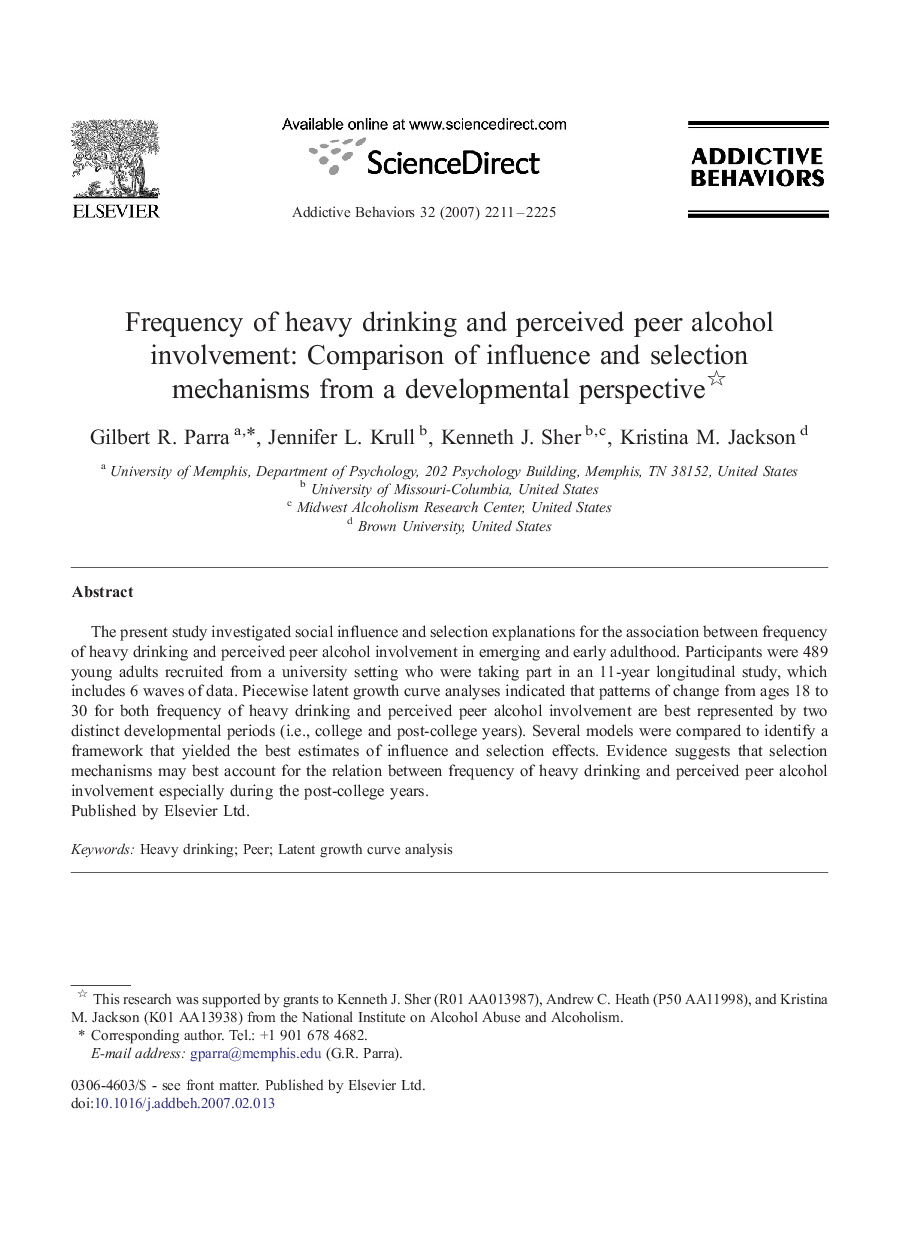| Article ID | Journal | Published Year | Pages | File Type |
|---|---|---|---|---|
| 900138 | Addictive Behaviors | 2007 | 15 Pages |
The present study investigated social influence and selection explanations for the association between frequency of heavy drinking and perceived peer alcohol involvement in emerging and early adulthood. Participants were 489 young adults recruited from a university setting who were taking part in an 11-year longitudinal study, which includes 6 waves of data. Piecewise latent growth curve analyses indicated that patterns of change from ages 18 to 30 for both frequency of heavy drinking and perceived peer alcohol involvement are best represented by two distinct developmental periods (i.e., college and post-college years). Several models were compared to identify a framework that yielded the best estimates of influence and selection effects. Evidence suggests that selection mechanisms may best account for the relation between frequency of heavy drinking and perceived peer alcohol involvement especially during the post-college years.
